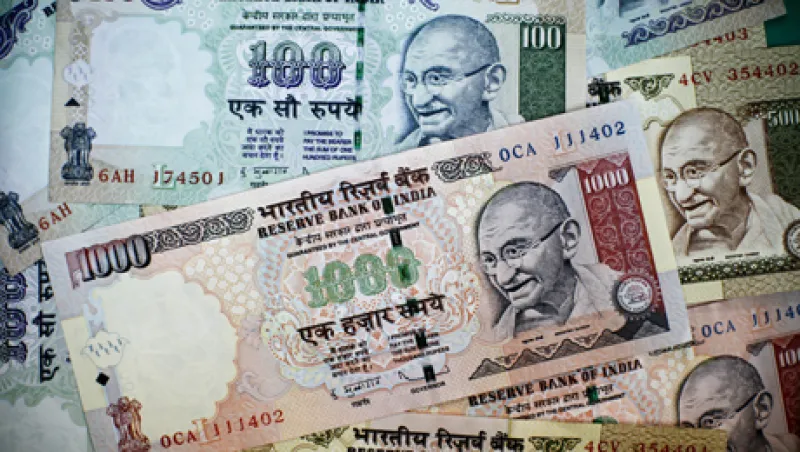Emerging markets have been particularly hard hit this year by the turmoil in Europe, but India has suffered more than most. The Indian rupee has declined 12.8 percent against the U.S. dollar since the beginning of the year, making it the worst-performing currency in Asia.
India has two strikes against it in the currency wars. “What’s happening in India is 50 percent domestic and 50 percent what’s happening globally,” says Olivier Desbarres, currency strategist at Barclays Capital in Singapore. Priyanka Kishore, currency strategist at Standard Chartered Bank in Mumbai, says the two strongest downdrafts for the rupee are its current account deficit, which is widening, and the lack of portfolio inflows, which in the past were strong enough to make up for the trade imbalance. India imports all of its oil and has to pay dollars for the petroleum purchases, which causes the dollar to rise against the rupee.
“The rupee became the favorite of shorts looking for one Asian currency that was not defended by its central bank,” Kihore says. “They wanted to express their bearishness on Asia and I think the rupee became a casualty of that.”
India’s central bank, the Reserve Bank of India (RBI), intervened in the market in late November in hopes of slowing the rupee’s fall, after it plummeted to 52.45 to the U.S. dollar on November 25. It has since bounced back marginally, but analysts predict that it will continue to slide, especially if Europe’s sovereign debt crisis continues. “We’ve had a negative outlook for some time, but developments in Europe remain key as to how much bad news there will be and how much worse the market can trade,” says Thio Chin Loo, currency strategist at BNP Paribas in Singapore.
Subir Gokarn, deputy governor of the central bank, added to anxiety in the market on Monday by warning that the bank may resort to capital controls “to enhance the supply of foreign exchange.” Gokarn reiterated that the central bank has no target for the rupee. In an effort to ease volatility in the rupee, the bank announced in late November that it would sell dollars directly to oil companies, removed a $100 million limit on foreign exchange supply from currency swaps and increased the maximum interest rate on non-resident rupee deposits by 1 percent.
“For a long time the RBI has had a hands-off approach,’ said Kishore. “Not only did they not intervene very strongly, but they went on record as saying they would let the currency’s level be determined by the markets.” Kishore said traders in Mumbai believed that the RBI had intervened directly in the market to support the rupee, but this was never officially confirmed. But foreign exchange reserves fell $4.3 billion in November, a sign that the bank was selling dollars to prop up the rupee.
Analysts said it was possible that the rupee’s slide could be halted by an end to the market turmoil in Europe, which has caused investors to flee all emerging markets, selling equities and bonds. That exodus causes downward pressure on emerging market currencies.
But Desbarres says that even if the European problem is solved, India still has domestic problems, like 9 percent annual inflation, that would make the rupee relatively unattractive compared to other Asian currencies. He said he would recommend the Indonesian rupiah and Korean won before the rupee.






